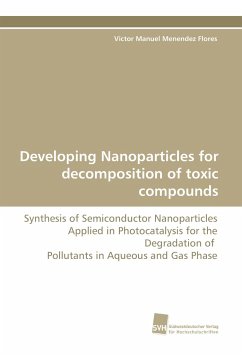This study has been focused on the development of semiconductor nanoparticles applied in photocatalysis. The photoactivity of the photocatalyst TiO2 under UV light is well known, however, this technique still has limited applications due to the relatively low photoactivity under visible light. There are different methods to increase the photoactivity of a photocatalyst, like the photodeposition of noble metals on the surface of the semiconductor, by doping or by photosensitization. Here the synthesis of different photocatalysts and their stability, which were tested to check the durability and performance after photocatalytic experiments, are introduced. Showing for example the pollutant decomposition capacity under visible light of the S-doped TiO2-Fe-III photocatalyst. It should be strongly considered for remediation of real contaminated water and polluted atmospheric conditions by solar energy irradiation.
Bitte wählen Sie Ihr Anliegen aus.
Rechnungen
Retourenschein anfordern
Bestellstatus
Storno








